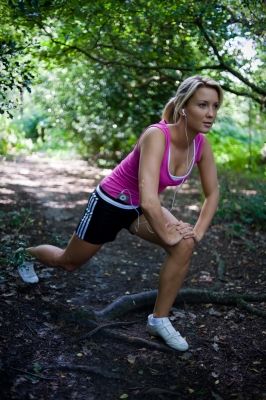Anxiety
Exercise Anxiety
Exploring gender-related safety concerns and park use.
Posted March 27, 2013

Recently, I’ve been on a health kick. Over a year after the birth of my second child, the weight has continued to creep up, not down. I’ve been tired, lethargic and self-conscious. Not to mention frustrated by my ill-fitting outfits.
While I’ve struggled with my sweet tooth, my biggest obstacle has been where and when to exercise. I’ve often remarked that I’m not a gym person, preferring to take my exercise outdoors in the fresh air, with nature as my backdrop.
Like the majority of the population, my favored form of exercise is walking [1]. Although the streets in my neighborhood are not the most scenic I’ve known, I’m fortunate to have beautiful Australian bushland just a short drive from my home. Better still, it contains wide paved paths, perfect for pushing a stroller. And yet, I do not use it.
There are many reasons for my reluctance, however my main concern is for personal safety, specifically a fear of being attacked. The times that I have ventured out, I’ve been the only person on the path, miles of vegetation shielding me from the road. Perhaps it is maternal instinct, but my senses are heightened, and I can never relax enough to enjoy the surrounding scenery.
My partner has never understood my apprehension. He feels the risk of attack is minimal, certainly not enough to avoid the area. While he is no doubt correct in his assessment, it is a risk I am reluctant to take.
It turns out I’m not alone. Richardson and Mitchell’s (2010) paper exploring gender, urban green space and health, mentions a number of studies that reflect my situation [2]. Compared to men, women are not only less frequent users of parks and public open space, but less likely to use these spaces for vigorous physical activity [3]. One of the reasons for this disparity is women’s concern over personal safety, despite knowing their concerns may be less real than perceived [4].
Other studies have found that in contrast to men, women are less likely to walk if they believe their local environment is unsafe [5]. Women also tend to have a lower preference for remote natural settings, and a higher preference for visibly managed spaces containing rangers and wardens [4,6].
Of course, there are reasons other than safety that restrict women’s ability to exercise, not least of all the presence of young children [7]. Ironically, the answer to my exercise dilemma has been joining a local gym, in part because of their convenient crèche facilities. I’ve discovered I quite enjoy it. For now, my time in more remote areas will be reserved for visits involving other adults, where talking is the focus and walking can be done at a more leisurely pace.
References
[1] U.S. Department of Health and Human Services. Physical activity and health: a report of the surgeon general. Atlanta, GA., U.S. Department of Health and Human Services: Centres for Disease Control and Prevention; 1996.
[2] Richardson EA, Mitchell R. Gender differences in green space and health relationships in the United Kingdom. Social Science & Medicine. 2010; 71:568-575.
[3] Cohen DA, McKenzie TL, Sehgal A, Williamson S, Golinelli D, Lurie N. Contribution of public parks to physical activity. American Journal of Public Health. 2007; 97(3):509-514.
[4] O’Brien, E. A. (2005). Publics and woodlands in England: well-being, local identity, social learning, conflict and management. Forestry, 78(4):321-336.
[5] Foster C, Hillsdon M, Thorogood M. Environmental perceptions and walking in English adults. Journal of Epidemiology and Community Health. 2004; 58(11):924-928.
[6] Virden RJ, Walker GJ. Ethnic/racial and gender variations among meanings given to, and preferences for, the natural environment. Leisure Sciences. 1999; 21(3):219-239.
[7] Popham F, Mitchell R. Leisure-time exercise and personal circumstances in the working age population: longitudinal analysis of the British Household Panel Survey. Journal of Epidemiology and Community Health. 2006; 60(3):270-274.
Photo credit: Image courtesy of Andy Newson at FreeDigitalPhotos.net.


